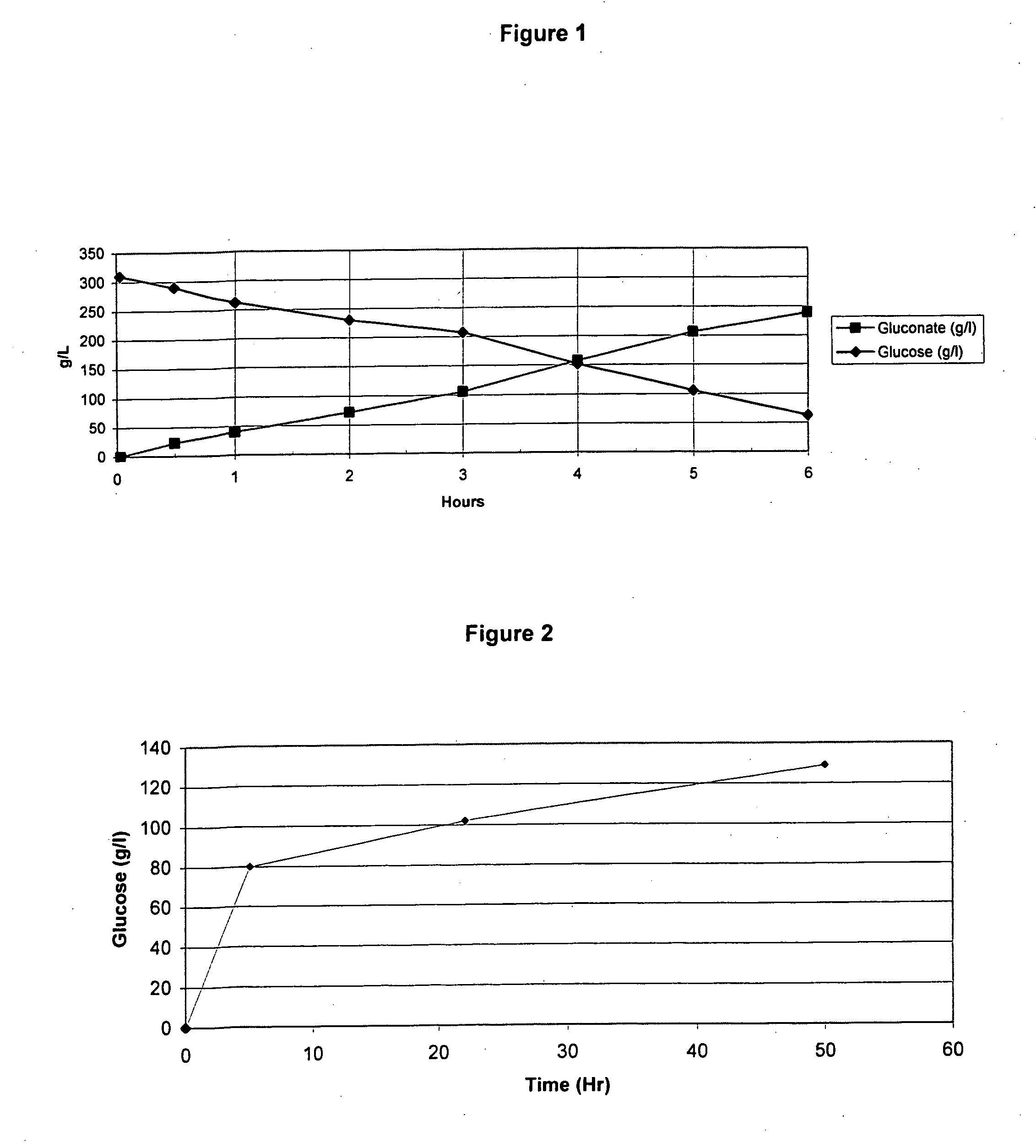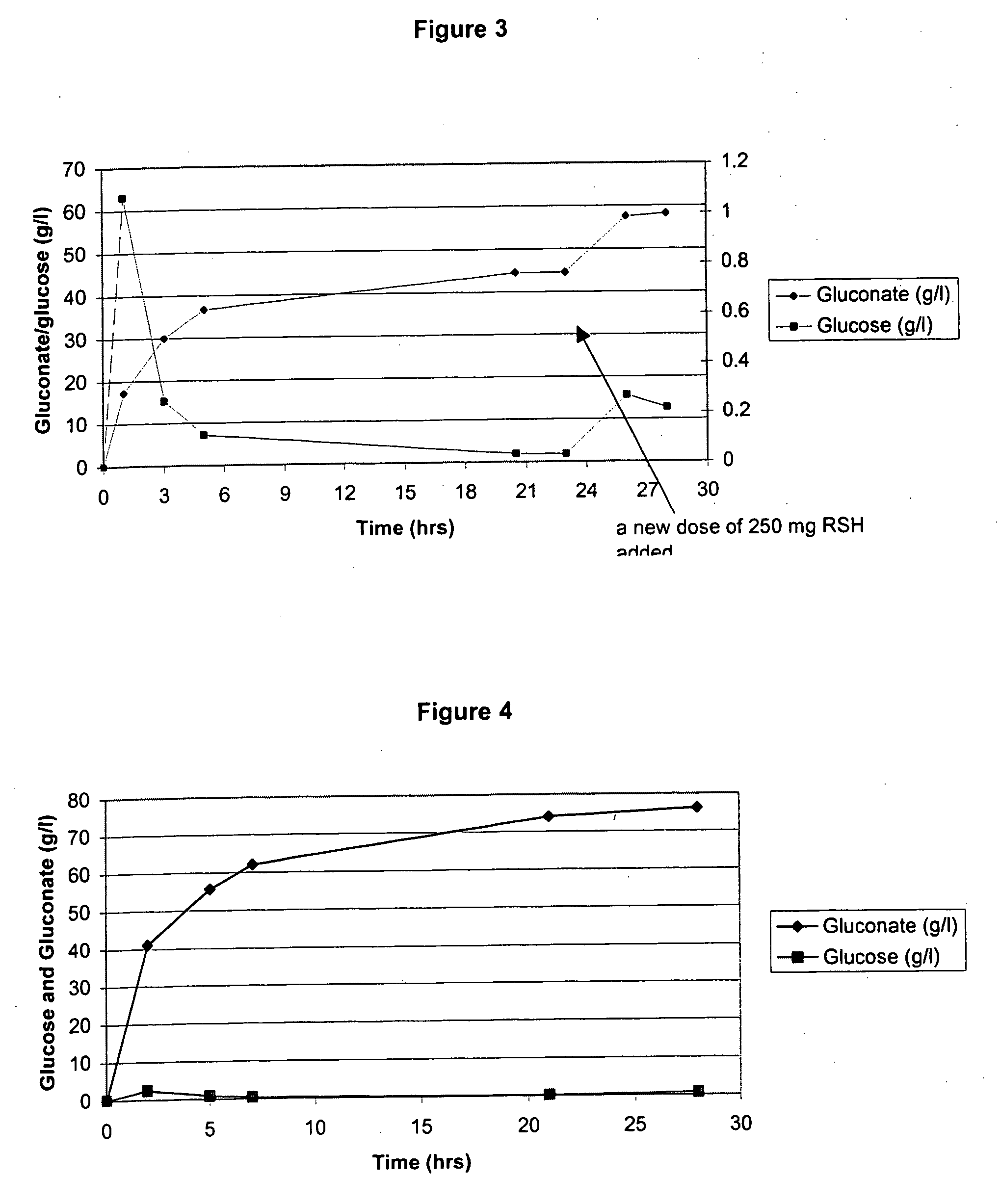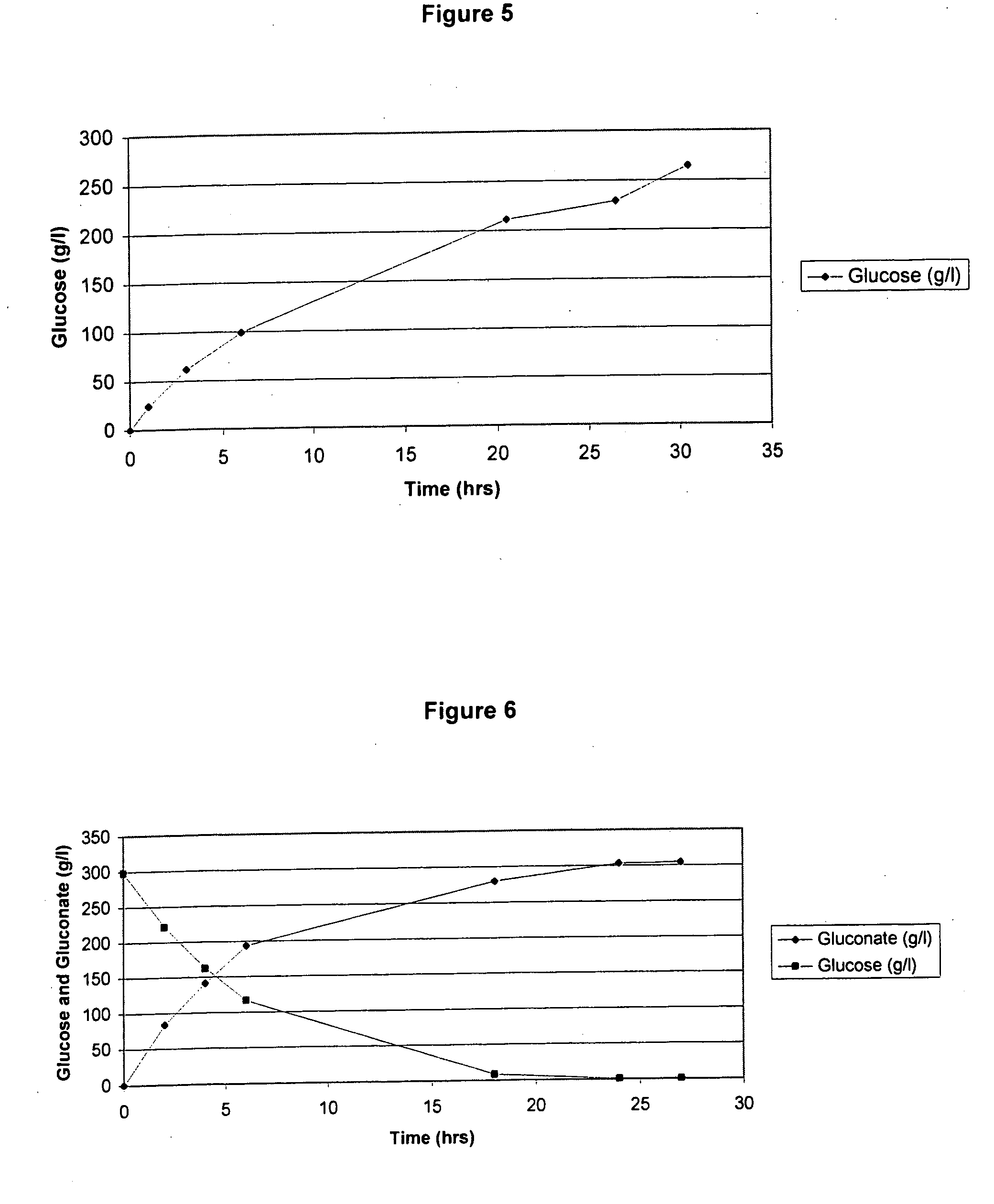Methods for producing end-products from carbon substrates
a technology of carbon substrates and end products, which is applied in the direction of biofuels, bacteria, fermentation, etc., can solve the problems of reducing the efficiency of fermentation processes, affecting production efficiency, and affecting the production efficiency, so as to reduce the catabolite repression and/or enzyme inhibition effect of intermediate product formation, the effect of end product production
- Summary
- Abstract
- Description
- Claims
- Application Information
AI Technical Summary
Benefits of technology
Problems solved by technology
Method used
Image
Examples
example 1
Conversion of Glucose to Gluconate
[0193] In this Example, experiments conducted to convert glucose to gluconate are describe. First, a 30 wt % glucose solution was produced (115 g of glucose in 275 ml of 50 mM phthalate pH 5.12 in deionized H2O). This solution was held at 35° C. and 0.3 bar of back-pressure. Then, 2700 U of glucose oxidase and 270 Units of catalase were mixed into the solution at 1100 rpm and 120% DO (under normal temperature and pressure, NTP or ATP) dissolved oxygen in water (“DO”). Upon mixing the enzyme, the DO dipped below 15% of saturation in the reaction medium under operating conditions indicating that with use of 30% glucose, oxygen can be a rate-limiting substrate. Indeed, it appeared that the that enzymes were partially inhibited when tested in solutions that were less than 30% sugar and picked up converting glucose as it went below 20% concentration. Thus, use of 60% sugar solution (i.e., one of the most common sugar feeds utilized in the art) results i...
example 2
Conversion of Starch to Glucose
[0194] In this Example, experiments conducted to convert starch to glucose are described. First, a 30% corn starch slurry was made (100 grams of starch [Cerestar] were mixed in 270 ml of 50 mM phthalate buffer, pH 5.0), and was kept at 45° C. Then, the mixture was mixed at 1100 rpm and 150% DO. Then, 250 mg of RSH enzyme (CUCONC™; Japan; 187 glucoamylase Units / g of powder) were mixed into the solution. This combination resulted in an initial 16 g / l / hr conversion of starch to glucose at pH 5.0 and 45° C. These results indicate that RSH glucoamylase enzyme has excellent kinetics for starch to sugar conversion (See, FIG. 2). However, it is contemplated that lower dosages of RSH glucoamylase will find use in the methods of the present invention to convert starch to glucose. Indeed, in some embodiments in which the 2 g / l / hr production commonly practiced in the art are used, 100 mg of RSH glucoamylase powder (activity / units) per liter of 30% starch stock so...
example 3
Conversion of Starch to Gluconate
[0197] In this Example, experiments conducted to convert starch to gluconate are described. First, a 30% corn starch slurry was made (100 gram of starch in 270 ml of 50 mM phthalate buffer, pH 5.1), and kept at 40° C. Then, under conditions of 1100 rpm and 130 DO, 250 mg of RSH enzyme (CUCONC™; Japan; 187 glucoamylase Units / g of powder), 880 ul of OXYGO® (glucose oxidase; Genencor) and 880 ul of FERMCOLASE® (catalase; Genencor) (1500 U / ml and 1000 U / ml) were mixed into the solution. This resulted in an initial 17 g / l / hr conversion of starch to glucose at pH 5.1-5.2 and 40° C. This result indicates that RSH glucoamylase enzyme has excellent kinetics for starch to sugar conversion under these bioconversion conditions in a bioreactor (See, FIG. 3).
[0198] However, in additional embodiments, optimization of conditions helps maximize the long term stability of the system. Additional enzymes needed to convert glucose to gluconate were also determined to w...
PUM
| Property | Measurement | Unit |
|---|---|---|
| pH | aaaaa | aaaaa |
| pH | aaaaa | aaaaa |
| pH | aaaaa | aaaaa |
Abstract
Description
Claims
Application Information
 Login to View More
Login to View More - R&D
- Intellectual Property
- Life Sciences
- Materials
- Tech Scout
- Unparalleled Data Quality
- Higher Quality Content
- 60% Fewer Hallucinations
Browse by: Latest US Patents, China's latest patents, Technical Efficacy Thesaurus, Application Domain, Technology Topic, Popular Technical Reports.
© 2025 PatSnap. All rights reserved.Legal|Privacy policy|Modern Slavery Act Transparency Statement|Sitemap|About US| Contact US: help@patsnap.com



